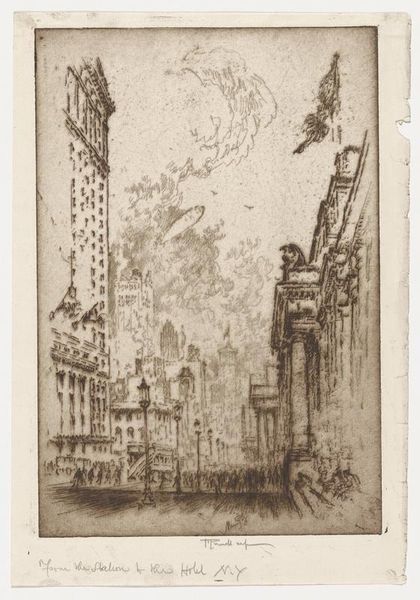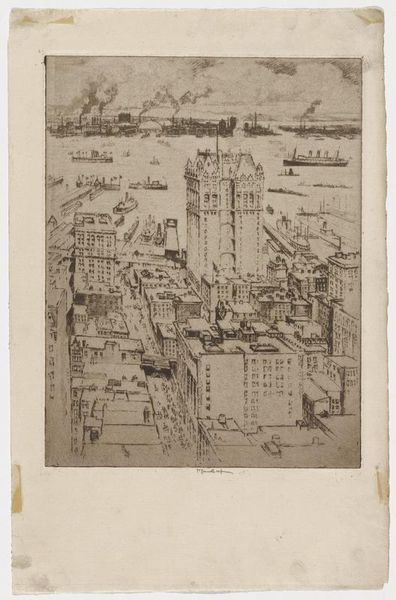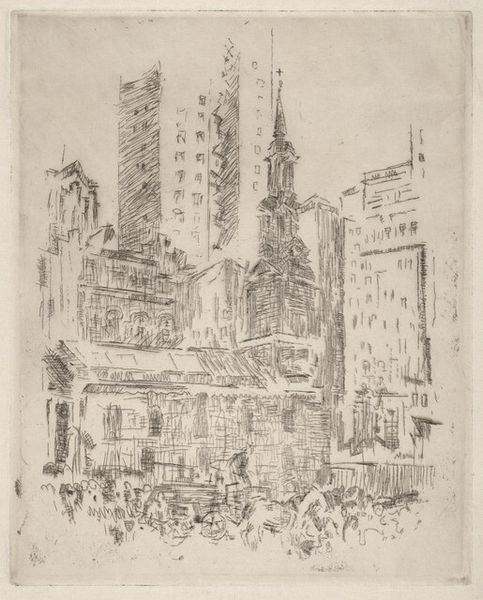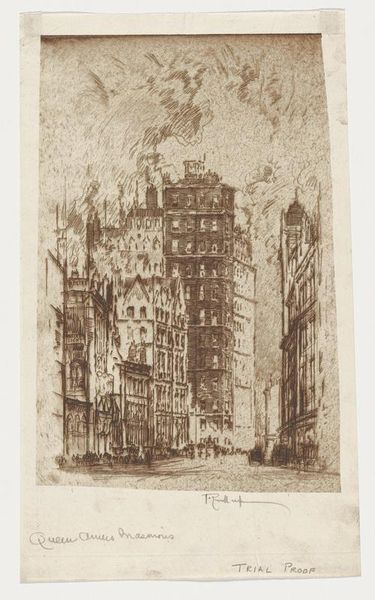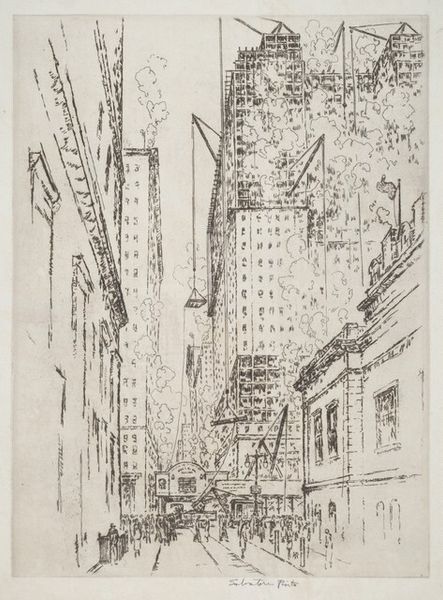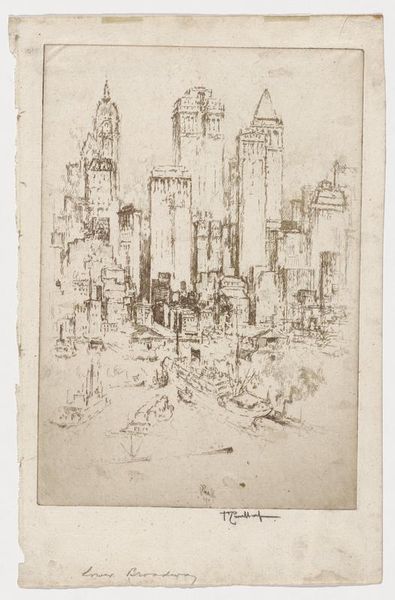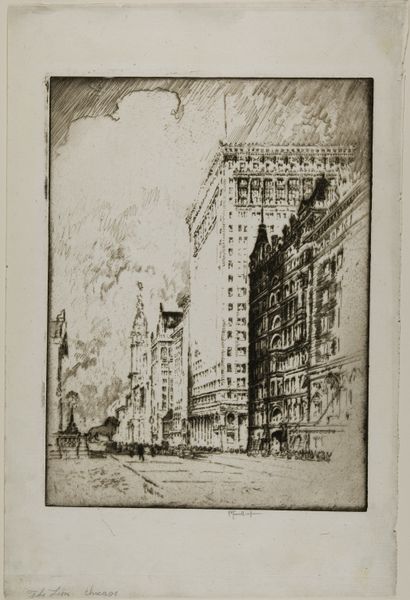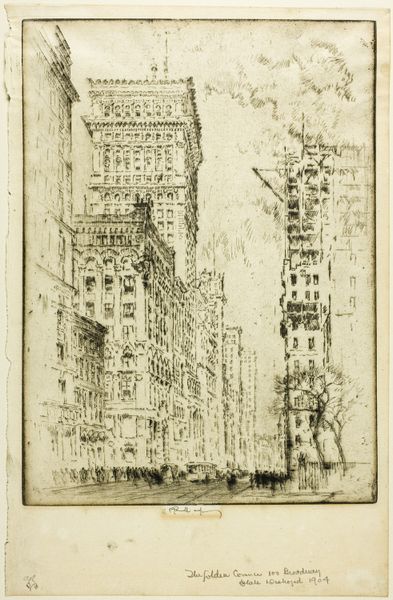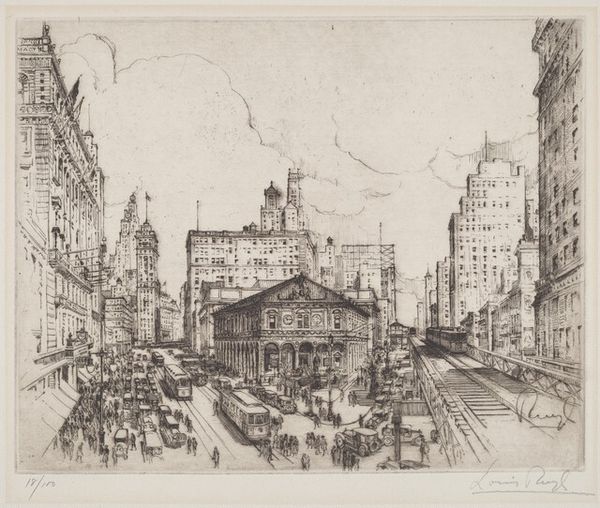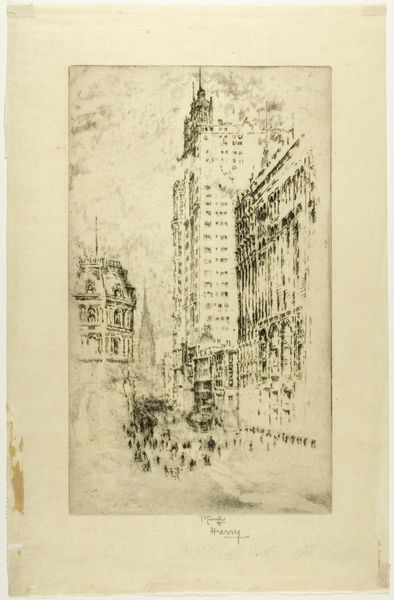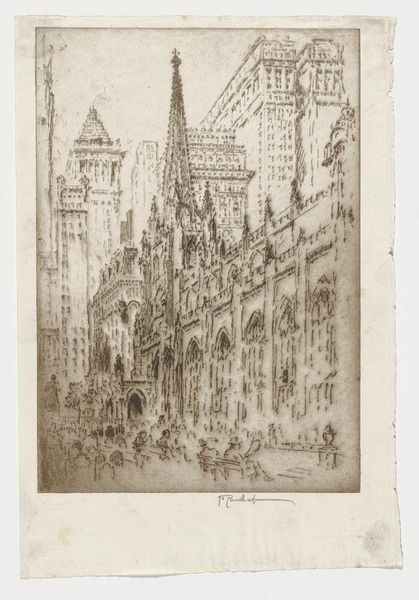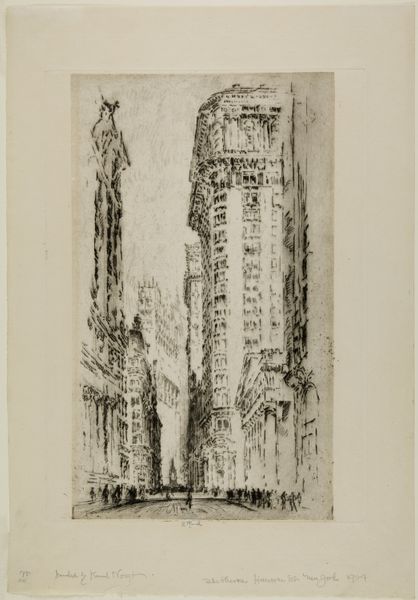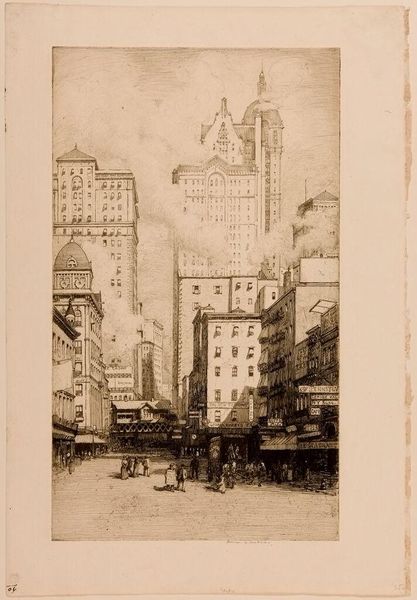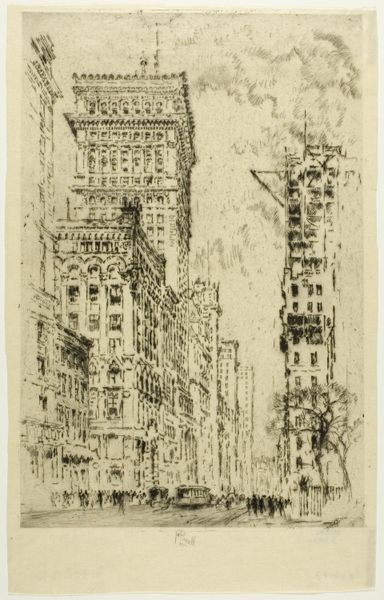
Dimensions: 11 15/16 x 8 3/8 in. (30.32 x 21.27 cm) (plate)14 3/8 x 10 1/4 in. (36.51 x 26.04 cm) (sheet)
Copyright: No Copyright - United States
Editor: This is "Trinity Church" by Joseph Pennell, an etching from 1904. I'm struck by the contrast between the grandeur of the church spire and the somewhat chaotic structures in the foreground. How do you interpret this work? Curator: For me, the power of this piece lies in Pennell's manipulation of materials and process to reveal a city grappling with change. He’s not simply depicting Trinity Church; he's showcasing the dramatic clash between old and new architectural forms and, by extension, between different social strata. Consider the etching itself – the lines, the tonal variations. Editor: Yes, I notice how the lines are much finer and more detailed when rendering the buildings further back. Curator: Exactly! The labor involved in rendering those skyscrapers versus the shacks at the front – what does that suggest to you about Pennell’s attitude towards the subjects, or his own labor for that matter? Think about how the materials, the etching plates, and the press itself contributed to this visual hierarchy. Who did Pennell envision consuming his artwork? Editor: I hadn't thought of it that way. It's like the process of creating the etching mirrors the societal divisions of the time. He likely produced multiples, suggesting a market beyond just the elite. Curator: Precisely! The etching becomes a commodity itself, accessible to a wider audience than a unique painting. It's a manufactured object, mirroring the industrialized cityscape it depicts. This pushes the boundaries of "fine art" by being inherently reproducible and disseminated. Editor: I see your point. It’s fascinating to consider how the material process and distribution reflect broader economic and social shifts. Thanks for shedding light on that! Curator: And thank you. It is by analyzing how art becomes intertwined with the means of production and consumption that we uncover the intricate narratives embedded within.
Comments
No comments
Be the first to comment and join the conversation on the ultimate creative platform.
